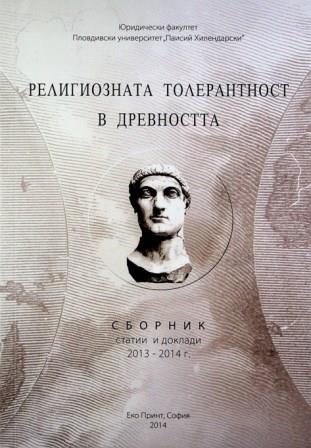Правото и политиката през VI в. сл. Хр. - за един християнски свят
Law and Politics in VI AD in the Christian World
Author(s): Rosalía Rodríguez López
Subject(s): Law, Constitution, Jurisprudence, Civil Law, Canon Law / Church Law, Roman law
Published by: Пловдивски университет »Паисий Хилендарски«
Keywords: law; politics; christianity
Summary/Abstract: The article assumes that the Serdica Edict of Tolerance issued by Galerius in 311 AD has laid the foundations for the Edict of Milan, 313 AD issued by emperors Constantine and Lucinius. On the basis of these edicts the politics of Constantine after 323 developed into a distinct favouritism towards Christian religion even though the Roman-Greek cult hadn’t been banned since it was practised by the upper classes. The Roman Empire gradually turns into the Christian Empire and the bases laid by Constantine in the private and public law based on justice, equality, compassion and charity are the foundations of the ideology as well as in the argumentation in legislative activities of following emperors. The study emphasizes the administrative aspects of the Christian influence related to the theory of power which were consolidated during the reign of emperor Justinian. Justinian develops one ambitious programme which aims to revive the Roman Empire. It is known as ‘renovatio imperii ’ (restoration of the Empire) and this programme spreads in all areas of public life. The emperor relies on the help of the clergy, in order to achieve the expected results. In return of their help he grants exclusive privileges and protection noted in the legislation from that period. The concept of the power in the Empire being unified, supreme, Christian, relying on divine legitimacy is established in Constantine’s time. Justinian adopts Constantine as his role model and just the latter he combines political and religious interests and it this way Justinian solidifies the principles of rule and the system of theocratic aristocracy and with a model of absolute power.
Book: Религиозната толерантност в древността : Сборник статии и доклади 2013-2014
- Page Range: 108-117
- Page Count: 10
- Publication Year: 2014
- Language: Bulgarian
- Content File-PDF

